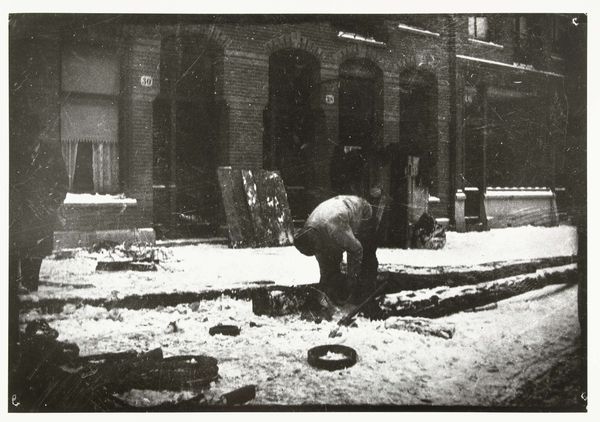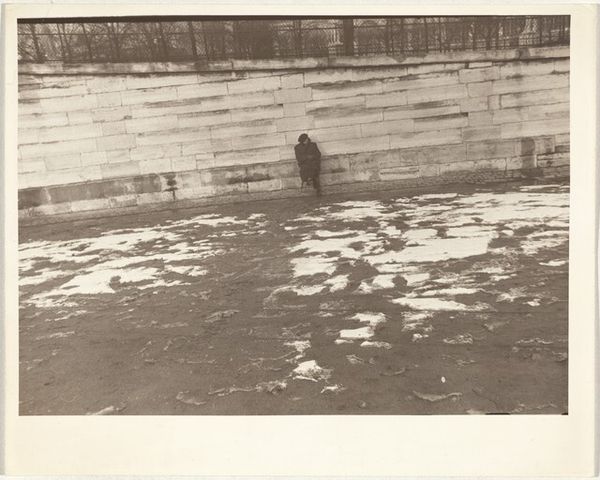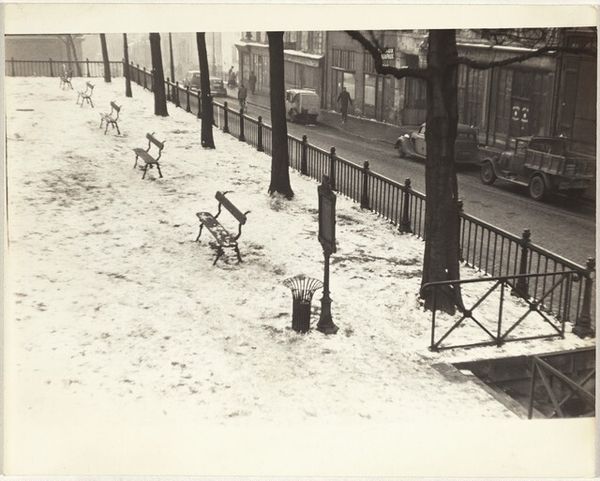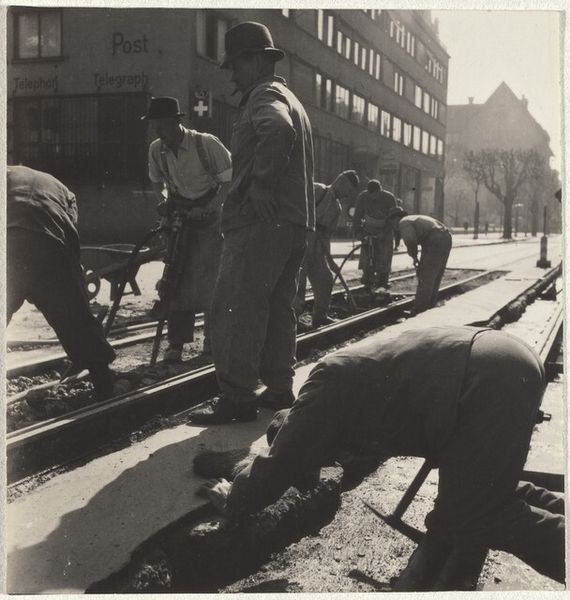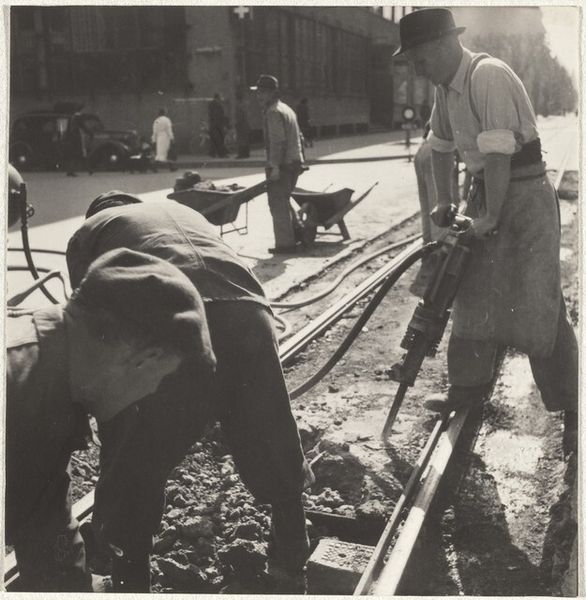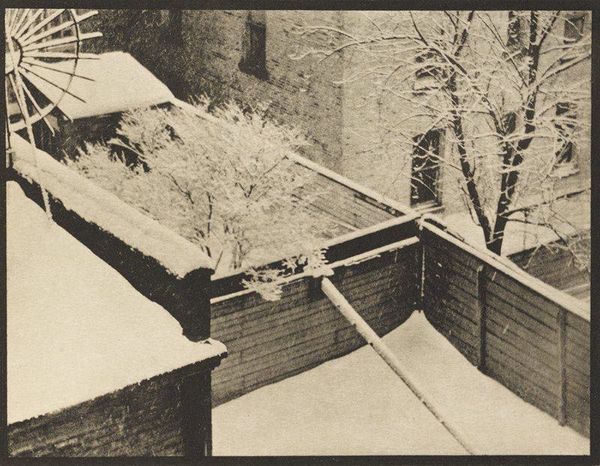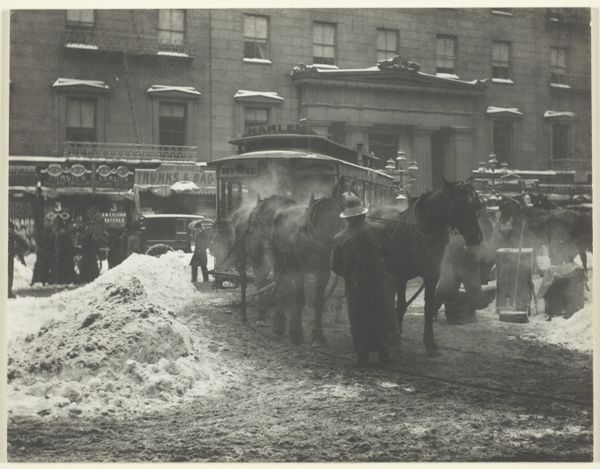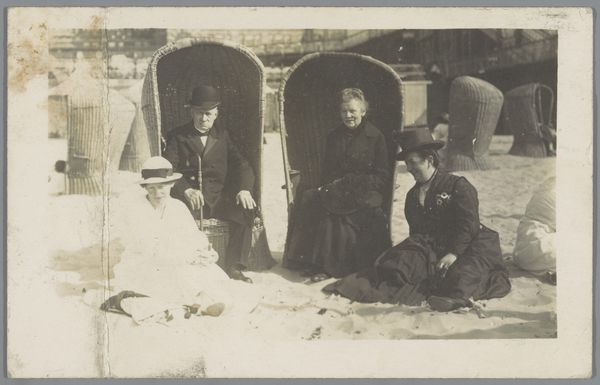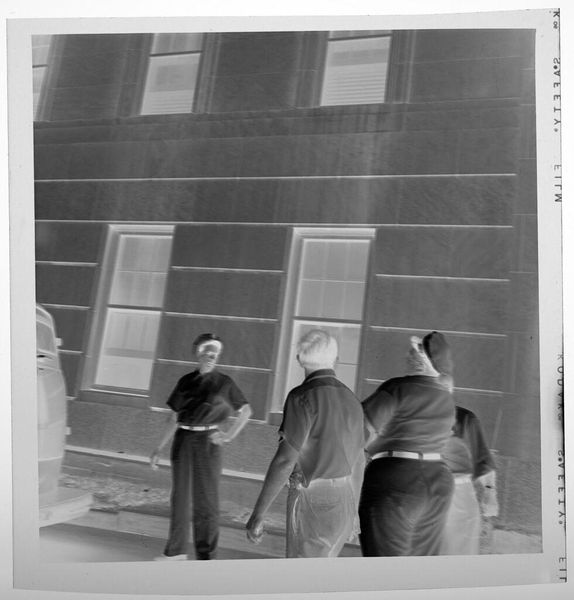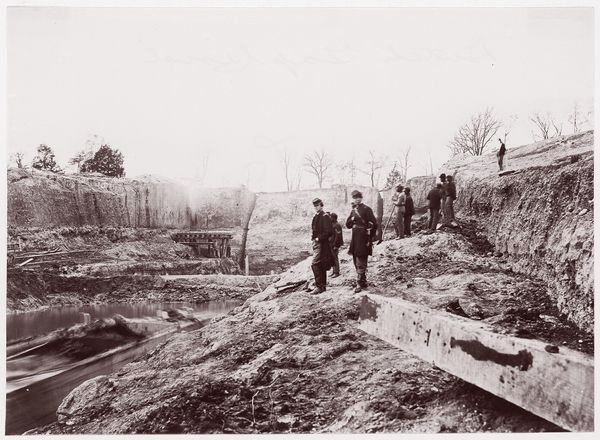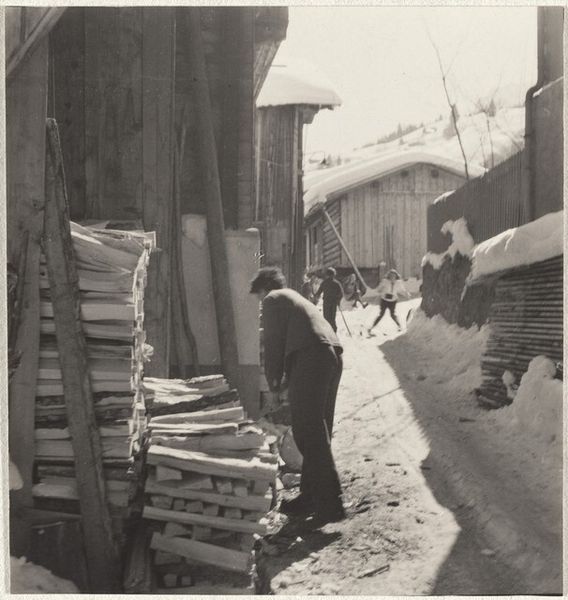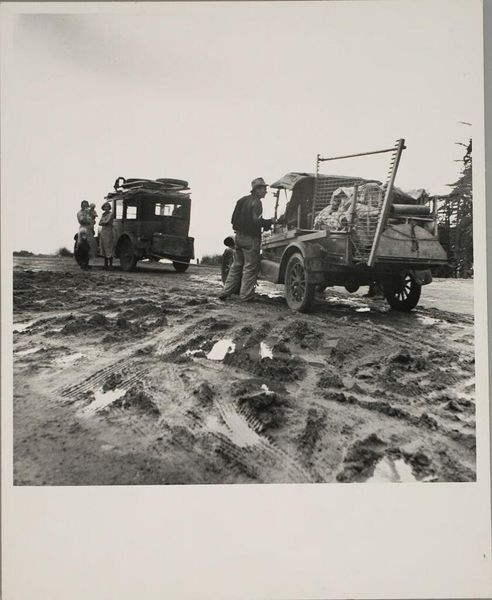
gelatin-silver-print, photography, gelatin-silver-print
#
portrait
#
gelatin-silver-print
#
street-photography
#
photography
#
gelatin-silver-print
#
genre-painting
#
modernism
#
realism
Dimensions: 6 3/4 x 6 9/16 in. (17.15 x 16.67 cm) (image)18 x 14 1/16 in. (45.72 x 35.72 cm) (mount)
Copyright: No Copyright - United States
Curator: What a poignant scene captured in this gelatin silver print, "Untitled," taken around 1930 by Edna Seaton. Look at the almost brutal simplicity of men clearing snow. Editor: My initial thought is that the monochrome palette emphasizes a kind of stark realism, a document of labor against a very bleak and wintry urban background. There's a subtle class commentary, isn't there? Curator: Precisely. The gelatin silver process, popular at the time, lends a certain immediacy and gritty texture. Consider that the production of photographs was becoming increasingly accessible to women. The everyday labour of largely anonymous workers become material for a photograph which is now on display in an art museum! It speaks to the artist's intentional choices about what is valued, and whose work matters. Editor: I am drawn to this street scene not just as documentation but also as a study in the social dynamics of urban labor during the Depression era. Gender obviously factors into how we read this photograph. Where are the women? What were their working conditions like? Curator: These kinds of commissioned and non-commissioned photography reveal more than its ostensible subject. It shows economic relationships, such as day labour or hourly labour. A key feature is also the composition; the building behind the snow shovelers and their equipment, their simple jackets and head coverings become markers for thinking through the economics and materiality of photography and social difference. Editor: I think there’s also a dialogue with earlier forms of genre painting here too. Seaton uses a relatively new medium to capture what painters of the 19th century often focused on. However, I would add, and as you point out, photography in the 1930s opened opportunities to women interested in engaging with social and political themes, as well as in participating more equitably in the economic viability of visual media. Curator: That's a sharp observation. It underscores the role of material advancements in expanding access to visual narratives, reflecting societal shifts around labour, class, and identity. The photographic print also has a tactile quality; think about how it would have been experienced in the hands of the photographer, of a magazine editor, or of family members of the subjects, circulating between hands as a material object and cultural document. Editor: Looking closely makes me think about what it meant to create this type of work at the time, when realism served both documentary and artistic goals. And even today, nearly a century later, these critical questions keep evolving. Curator: Yes, precisely.
Comments
No comments
Be the first to comment and join the conversation on the ultimate creative platform.
